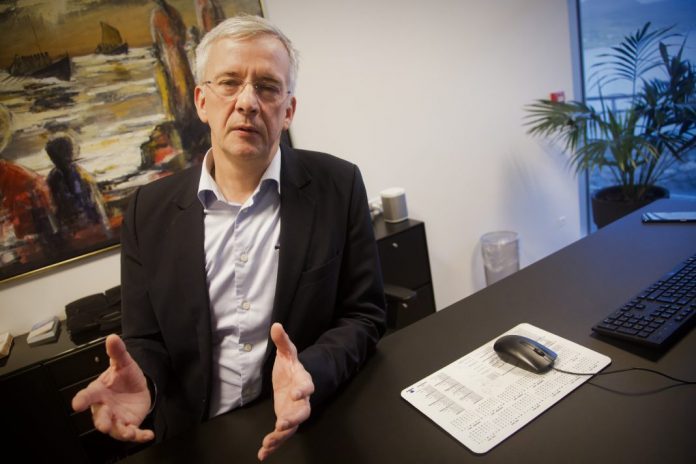Bakkafrost CEO, Regin Jacobsen, is eager to stand out from everyone else in the global salmon market.
This article featured in Ilaks.no on the 12th November 2018
Kontali Analyse pulled no punches in January. The Faroe Islands fetch the best price per kilo, they have fewer mortalities, and their salmon have a higher average weight.
Medicine-free
“We don’t have any activities in Norway, so we can’t make any comparisons. But our focus in the last few years has been on how we can operate with no use of medicines whatsoever. It’s been 15 years now since we used the last dose of antibiotics, and no medicinal treatments have been employed against lice in the past 13 months,” Jacobsen told SalmonBusiness.
Bakkafrost currently employs lumpfish, in addition to fresh and temperate water treatments, in combating lice. “We will also be producing bigger smolt, but in that respect we haven’t – as yet -progressed that far. Both Hidden Fjord and Marine Harvest have come further than us,” said Jacobsen.

Just that little bit better
The Faroe Islands does not produce more than two to three percent of all salmon in the world; nonetheless they have caught the attention of the global market. They achieve particularly good prices compared with the competition.
“Local raw materials is our cutting edge. The feed we produce is from locally harvested fish. We emphasise that factor also to differentiate our product in the market,” said Jacobsen.
“If you are going to sell yourself as superior, you must have the product that leaves everythiung else paling in comparison,” said Jacobsen. “Norwegian salmon is superb food, and safe to eat. But to build a “brand”, you have to be able to tell a story. It has to be just that little bit better. Our average weight is highest in the world – around 6.5-7 kilos in round weight.”
That is a strategy that Bømlo producer Bremnes Seashore has also succeeded with. Their Salma product is sold at a far higher price than ordinary farmed salmon. Jacobsen drew parallels to wine production.

“There are some wines that are small (in terms of quantity), but which are vastly superior to others. In that way it’s possible to differentiate and “brand” yourself, so that it is perceived as distinctive.”
Does that make you less vulnerable in a fluctuating market? “Absolutely, ” said Jacobsen, proudly. “The branding strategy is intended to provide us with enhanced stability.”
Competition
Nonetheless, he has noticed that Chile is making progress “onwards and upwards”.
“Chile has almost caught up with us in the second and third quarters of 2018, with regard to weight average. They are practically on a par with the Faroe Islands. The question is whether they manage to keep up at that level in the long run. They have, from a biological perspective, made spectacular advances in 2018. It will be exciting to see if they manage sustainable production in the long term. At present they are doing very well,” concluded CEO Jacobsen.


